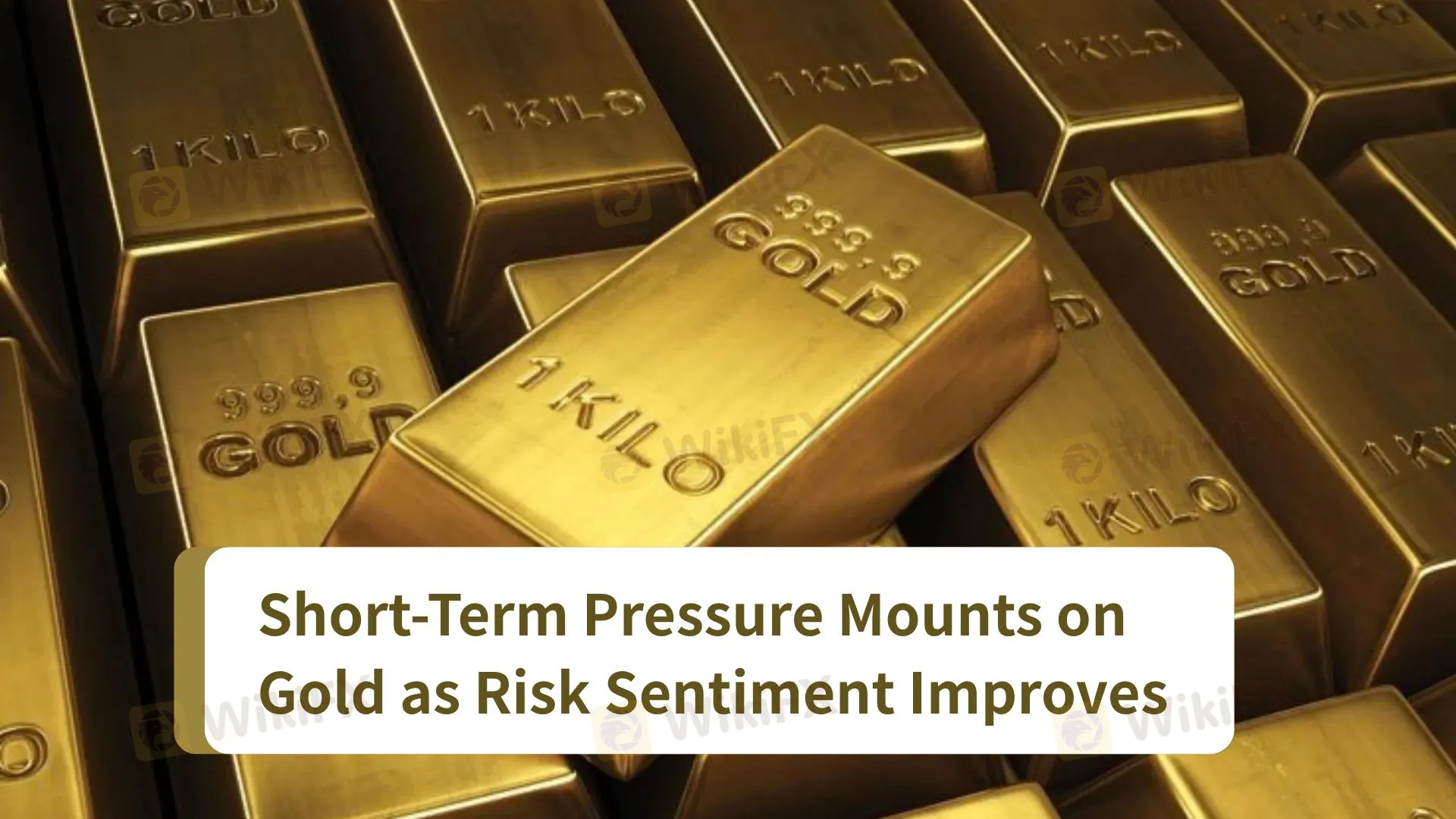简体中文
繁體中文
English
Pусский
日本語
ภาษาไทย
Tiếng Việt
Bahasa Indonesia
Español
हिन्दी
Filippiiniläinen
Français
Deutsch
Português
Türkçe
한국어
العربية
Short-Term Pressure Mounts on Gold as Risk Sentiment Improves
Abstract:Despite a stronger dollar and rising equities, gold’s retreat appears to be a temporary correction rather than a trend reversal.

Gold Faces Short-Term Setback, But Long-Term Potential Remains Intact
The price of gold has come under notable pressure recently, sliding more than 3% amid a broad shift in market sentiment. The shift follows a wave of optimism in financial markets triggered by easing trade tensions and a rebound in equities. While the short-term trend for gold appears negative, the underlying factors that supported its historic rally remain largely intact, pointing to continued longer-term potential.
Recent Market Reactions Weigh on Gold
Investor enthusiasm has surged in recent sessions, leading to strong gains in global equities and a firmer U.S. dollar. These conditions typically weigh on traditional safe-haven assets like gold. As investors embraced risk-on sentiment, capital rotated away from defensive assets. Gold, which had been on a remarkable upward trend for months, was not immune to the broader sell-off
The dollar‘s resurgence added further downward pressure. As a dollar-denominated asset, gold becomes less attractive to foreign buyers when the dollar appreciates. With both risk appetite rising and the greenback strengthening, it’s unsurprising that gold prices retreated. Yet this retreat should be seen more as a tactical correction than a reversal of the long-term trend.
Support and Resistance Levels to Watch
From a technical perspective, gold now finds support near the $3,200 level. Should this floor give way, further pullbacks could test the $3,150 or even the $3,000 zones. Still, despite these downside risks, gold has yet to break the broader bullish pattern that has defined its recent price action. Unless a consistent series of lower lows begins to form, the longer-term uptrend remains valid.

On the upside, resistance is gathering in the $3,269–$3,275 area. A sustained move above that could open the path toward $3,360 and $3,400, eventually setting up a retest of the all-time high near $3,500. Such a move would require a fresh wave of demand—possibly from renewed macro uncertainty or a weakening dollar.
Upcoming Data May Shift Momentum
Market participants are now eyeing key economic indicators for clues on golds next move. The upcoming U.S. Consumer Price Index (CPI) report and consumer sentiment readings will provide insight into inflation trends and household confidence. A drop in inflation expectations, especially in light of reduced input costs, could ease upward pressure on gold.
That said, if the economic data disappoints or growth indicators soften, gold may find renewed support. It remains a popular hedge not only against inflation but also against broader uncertainty—be it from financial instability, slowing economic momentum, or asset market volatility.
Longer-Term Fundamentals Remain Supportive
Despite the recent correction, the longer-term outlook for gold remains constructive. Structural demand from central banks, continued diversification away from yield-based assets, and long-term concerns about currency stability all contribute to sustained interest in the yellow metal.
While gold may continue to trade under pressure in the near term as markets digest the latest macro developments, it would be premature to count it out. The environment that enabled gold to surge in recent years—uncertainty, demand for alternative stores of value, and global economic shifts—has not fundamentally changed.
In short, gold may be cooling off for now, but its role in a diversified portfolio remains as relevant as ever.
Disclaimer:
The views in this article only represent the author's personal views, and do not constitute investment advice on this platform. This platform does not guarantee the accuracy, completeness and timeliness of the information in the article, and will not be liable for any loss caused by the use of or reliance on the information in the article.
Read more

Forex Options Trading: The Smart Way to Ease Market Volatility
Want to feel at ease amid forex market volatility? Consider exploring forex options that work as derivatives based on underlying currency pairs. With multiple flexible alternatives, forex options trading is the approach you need to adopt to navigate the seemingly complex forex market. Read this article for more insights.

5 Cons of DB Investing Broker You Must Know
It's always advisable to read online review articles about forex brokers you are thinking to Invest your money with. The forex market has become increasingly unsafe due to the rise of fraudulent brokers. Review articles help you spot scam brokers and protect your money. Read this important article about DB Investing to stay fraud alert.

iForex - Where Withdrawal Denials, High Spread & Scams Spoil Your Forex Trading Mood
Are high spreads charged by iForex disallowing you to make profits? Do you feel that you will never be able to withdraw from iForex? It's nothing new! Read this exposure story where we have highlighted complaints from several investors.

Forex Hedging Strategies - Calming You Amid Market Chaos
Finding it hard to deal with the forex market volatility? Do those ups and downs in currency pair prices make you more nervous or worried? You need the right forex hedging strategies. As a concept, forex hedging is about strategically opening additional positions to stay immune against adverse forex price movements. It’s about offsetting or balancing your current positions by buying or selling financial instruments. As a trader, your risk exposure is reduced, hence limiting your potential losses.
WikiFX Broker
Latest News
Forex Hedging Strategies - Calming You Amid Market Chaos
Key Events This Week: ISM, Trade Balance And More Earnings
What Is Forex Currency Trading? Explained Simply
A Beginner’s Guide to Trading Forex During News Releases
Ultima Markets enters the UK and gains the FCA license
LSEG Announces £1 Billion Share Buyback Program
SEC Lawsuit Targets Real Estate Fraud Scheme by Joseph Nantomah
ASIC Regulated Forex Brokers: Why Licensing Still Matters in 2025
XS.com Broker Partnership Expands Liquidity with Centroid Integration
Scam Alert: Cloned Broker Scams on the Rise
Currency Calculator


